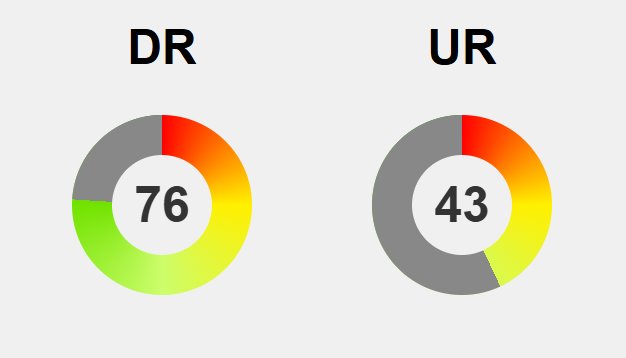Unlock the transformative potential of FiberConX’s VoIP services by mastering the art of configuring your Grandstream ATA, like the HT814 or HT818. Imagine slashing communication costs while boosting quality and flexibility—are you ready to make the switch? This guide reveals how a few simple setup steps can turn your existing analog phones into a powerful, internet-based calling system. From initial network preparations to advanced security tweaks, every detail is crucial for seamless operation and optimal performance. Properly configuring your ATA not only ensures crystal-clear calls but also fortifies your system against cyber threats, making your business communications more resilient than ever. Are you prepared to elevate your connectivity, streamline operations, and realize significant savings? With strategic adjustments and ongoing optimizations, your communication infrastructure can become a competitive advantage—if you understand the nuances of the process, the rewards are well within reach.
Transform Your Business Communications with FiberConX’s VoIP Solutions in Canada
Elevate your Canadian business with FiberConX Communications, a leader in VoIP and IP business phone services. Our comprehensive solutions include advanced features like voicemail, IVR, ring groups, and voicemail-to-mail, ensuring seamless communication and improved customer engagement. Whether you’re looking to streamline your call management or enhance your professional image, FiberConX provides reliable and scalable Home Phone services tailored to your needs. Contact our sales team at Sales@FiberConX.com or call 1.800.961.6856 to learn how we can help your business stay connected and competitive.
Unlock Cost Savings and Modernize Your Business Communication with FiberConX and Grandstream ATAs
FiberConX is transforming business communication by offering advanced VoIP services that make traditional landlines increasingly obsolete. Switching to internet-based calling isn’t just about cutting costs; it’s about gaining flexibility, scalability, and simplicity in managing your phone system. With FiberConX, organizations can eliminate hefty landline charges, reduce long-distance fees, and streamline their entire communication infrastructure—all over a reliable internet connection. This shift not only saves money but also opens up new possibilities for integrating digital tools and adapting quickly to changing business needs.
At the heart of this transition are Analog Telephone Adapters, or ATAs, like those from Grandstream. These devices serve as bridges, connecting your existing analog phones, fax machines, or legacy systems to the modern VoIP network. Whether you choose models like the HT814 or HT818, these adapters are designed for straightforward setup, reliable operation, and broad compatibility with FiberConX’s SIP services. Properly configuring your ATA is crucial because it directly impacts call quality, stability, and overall system performance. A well-set-up device ensures that your communication remains clear, dependable, and professional.
Getting your ATA properly configured isn’t just a technical step—it’s the key to unlocking the full benefits of FiberConX. When set up correctly, these devices facilitate seamless, high-quality voice calls over the internet, regardless of your team’s location. This means fewer dropped calls, clearer audio, and a more professional appearance for your business communications. Furthermore, a properly configured ATA simplifies deployment, enabling quick activation and smooth integration into existing networks. The result is minimal downtime and a hassle-free transition to a future-proof communication setup.
Choosing the right device and understanding its features are essential parts of this process. Grandstream ATAs are SIP-compliant, supporting standard protocols that make integration straightforward. Their user-friendly web interfaces allow even those with limited technical experience to manage and adjust settings easily. The key steps involve connecting the device to your network, retrieving its IP address, and entering the necessary SIP server details provided by FiberConX. By doing so, you establish a solid foundation for reliable registration and operation, setting the stage for ongoing management and troubleshooting.
Network considerations play a significant role in successful ATA configuration. Establishing a stable connection, assigning a static IP address, and setting up NAT traversal options are vital steps. These measures prevent common issues like call dropouts or poor audio quality, ensuring your VoIP system performs reliably. Paying attention to security—such as updating default passwords, enabling encryption protocols, and configuring firewalls—further enhances the robustness of your setup. When these elements are addressed, your organization can enjoy the full benefits of FiberConX’s cost-effective, scalable VoIP service with minimal disruption.
Ultimately, a well-configured ATA turns what might seem like a complex technical task into a straightforward process that unlocks significant savings and operational efficiencies. It’s about more than just making calls; it’s about creating a resilient, flexible communication backbone that supports your business growth. With the right setup, you’ll enjoy clearer conversations, fewer interruptions, and a system that’s ready to evolve with your needs. Proper configuration isn’t just a technical necessity—it’s a strategic move towards smarter, more cost-efficient business communication.
Essential Steps to Prepare for Seamless FiberConX ATA Configuration
Before you start configuring your Grandstream ATA for FiberConX, gathering everything you need in advance will make the process much smoother. Begin by ensuring your ATA—whether it’s the HT814 or HT818—is powered on and securely connected to a stable network. A wired Ethernet connection is preferable because it offers a more reliable link during setup, reducing the chances of interruptions or connectivity issues. Confirm that your computer or laptop, which you’ll use to access the device’s web interface, is on the same network as the ATA. This setup simplifies accessing the device and avoids potential network conflicts.
Next, locate all your FiberConX account details, including your SIP server address, User IDs, and passwords. These are essential for the device to register correctly and route calls properly. Having this information on hand prevents delays once you begin the configuration. It’s also wise to verify that your network’s security settings won’t block communication between your computer and the ATA’s IP address. Firewalls or security policies can sometimes interfere, so adjusting these settings beforehand avoids troubleshooting later on.
If your network assigns IP addresses dynamically, consider setting a static IP for your ATA. This step ensures that the device maintains a consistent address, simplifying future management and troubleshooting. Powering up the ATA is straightforward—connect it to power and your network, then wait for it to fully boot. Indicators like LED lights will signal readiness, but the key is to retrieve its IP address to access the web interface. You can do this by connecting an analog phone to the ATA, dialing *** to access the IVR menu, then dialing 02. The device will then read out its current IP address.
Once you have the IP, open a web browser on your computer and type the address into the URL bar. The login screen will appear, with default credentials often set to “admin” for both username and password unless changed previously. Logging in grants access to the device’s settings. Take a moment to familiarize yourself with the interface, which is usually organized into tabs like PROFILE 1 and FXS Ports. Navigating confidently will save time during setup.
Configuring your network settings correctly is just as critical as entering the device details. Assigning a static IP within your network or router settings prevents the device’s address from changing later, which could disrupt your configuration. Also, check your firewall rules to ensure they don’t block SIP and RTP traffic—the protocols used for signaling and voice data. Opening necessary ports or creating exceptions will help maintain call quality and stability, preventing issues like dropped calls or one-way audio.
Before inputting your FiberConX SIP details, review your network environment. Make sure your firewall, NAT, and security settings are optimized for VoIP. Activating NAT traversal options, such as ‘Keep-Alive,’ helps maintain a persistent connection through your router’s NAT policies. These steps prevent common problems like call dropouts or poor audio quality caused by network interruptions. Properly configuring these elements creates a solid foundation for reliable, high-quality VoIP calls.
Finally, double-check all connections and settings. Confirm that your ATA has a static IP and that your network’s security measures are in place. A stable, well-configured network environment ensures that your device will register correctly with FiberConX and operate reliably from the start. Having everything prepared before entering SIP server information minimizes errors, reduces setup time, and sets the stage for a smooth transition to VoIP. This preparation is the key to unlocking the full benefits of your FiberConX service and ensuring your communication system remains dependable as you scale.
Advanced Settings to Maximize VoIP Quality, Security, and Reliability
To truly maximize the quality and security of your FiberConX VoIP setup with a Grandstream ATA, diving into advanced configuration options is essential. These settings allow you to fine-tune your system for superior call clarity, stronger security, and enhanced stability, ensuring your communication infrastructure is both reliable and resilient.
One of the most impactful adjustments is customizing SIP profiles. By selecting the right codecs, you strike a balance between bandwidth efficiency and audio quality. For example, prioritizing high-fidelity codecs like G.711 or G.722 can significantly improve call clarity, especially when your network has ample bandwidth. Conversely, choosing more compressed codecs such as G.729 helps maintain stable calls in bandwidth-constrained environments. Tailoring these settings ensures your VoIP calls sound professional and are less prone to interruptions.
Security should be a top focus when refining your system. Changing default passwords to strong, unique ones is the first step toward preventing unauthorized access. Enabling SIP TLS encrypts signaling traffic, safeguarding the setup information from eavesdroppers. Similarly, activating SRTP encrypts the actual voice streams, making it much harder for outsiders to intercept sensitive conversations. These encryption protocols are vital in protecting your business communications from cyber threats, especially in environments handling confidential data.
Beyond encryption, securing your network involves implementing measures like firewall rules and VLAN segmentation. Creating a dedicated VLAN for VoIP traffic isolates your phone system from other network devices, reducing vulnerabilities. Adjusting firewall settings to permit only trusted IP addresses and specific ports for SIP and RTP traffic minimizes exposure to malicious actors. These steps help prevent unauthorized access and interference, ensuring your calls remain private and stable.
Keeping your ATA’s firmware up to date is crucial for ongoing security and performance. Manufacturers regularly release updates that patch known vulnerabilities, improve stability, and introduce new features. Regularly checking for and installing firmware updates protects your device from emerging threats and ensures compatibility with the latest network standards. An outdated firmware can leave your system vulnerable to attacks or cause compatibility issues that affect call quality.
NAT traversal settings are often overlooked but are vital for maintaining a consistent VoIP connection. Activating features like ‘Keep-Alive’ sends periodic SIP OPTIONS messages, preventing NAT mappings from timing out. This keeps your device registered with FiberConX and prevents issues like dropped calls or one-way audio. Adjusting session timers and registration intervals can recover quickly from minor network glitches, further stabilizing your calls and improving overall reliability.
For organizations with multiple lines or locations, creating separate SIP profiles for different user groups or devices introduces a layer of management and security. This segmentation allows tailored security parameters, codec preferences, and NAT configurations, giving you granular control. Managing profiles independently simplifies troubleshooting, updates, and scalability, helping your system evolve smoothly as your business grows. It also minimizes risks by isolating potential vulnerabilities within specific profiles.
Finally, pay attention to the small details that make a big difference. Regularly review your network’s security settings, ensure your firewall rules are correctly configured, and verify NAT traversal options are active. These continuous optimizations prevent common issues like call dropouts, poor audio quality, or security breaches. Properly maintaining these advanced settings turns a basic VoIP setup into a robust communication system capable of supporting your business’s future needs.
By embracing these advanced configuration steps, you elevate your VoIP system beyond simple setup. You create a secure, high-quality, and highly reliable communication environment that not only meets your current needs but is also prepared for future growth. Fine-tuning your ATA’s settings ensures every call is clear, every connection is safe, and your entire communication infrastructure remains resilient against evolving challenges. This proactive approach transforms your VoIP system into a strategic asset that drives efficiency, security, and professionalism across your organization.
By embracing these advanced configuration steps, you elevate your VoIP system beyond simple setup. You create a secure, high-quality, and highly reliable communication environment that not only meets your current needs but is also prepared for future growth. Fine-tuning your ATA’s settings ensures every call is clear, every connection is safe, and your entire communication infrastructure remains resilient against evolving challenges. For additional insights on optimizing your VoIP setup, consider exploring how to set up a FiberConX VoIP system for enhanced performance and security, which can provide comprehensive guidance tailored to your network environment.







